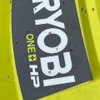LawnBoy 7265 Plug Fouling
Ted (Zone 4) IA
7 years ago
last modified: 7 years ago
Featured Answer
Sort by:Oldest
Comments (101)
Ted (Zone 4) IA
7 years agoTed (Zone 4) IA
7 years agoRelated Discussions
2 cycle Snapper question - need advice
Comments (28)Right, there's no reason you shouldn't mulch with a Hi-Vac. The only functional difference is that the bottom lip on the deck is turned under for a Hi-Vac and outward for the dedicated mulchers with the A.I.R. designation. I mulch with a Hi-Vac all the time, and so do a bunch of lawn crews. Dan, I'm not familiar with a smaller OHV Robin. That would be interesting. I am familiar with the old L-head Robins, that I think might have been called WT1-185V or something like that. Although displacing the same as the EH18V, these would be much smaller and lighter due to the L-head configuration. They would also make a lot less power. But as you say, I'm sure they are anvil reliable. I thought about buying one on eBay once for a mower project, but never got around to it. My current mower is a C216012RV (commercial Hi-Vac with the monster Robin EH18V but no self-propel) that I added self-propel to. This thing was the deal of the century: the guy was local and listed it on eBay as a "Robin" mower instead of Snapper for $50 buy-it-now, IIRC. So nobody with a "Snapper" search ever saw it, and I snapped (pun intended) it up asap when I saw it. I went to pick it up, and it looked brand new. They guy couldn't start it, so he figured it was disposable. I got it home, cleaned out the carb, and it ran great. I added the drive system with parts I mostly had laying around, and now I have the Cadillac of Hi-Vacs (Cadi-Vac?)....See Morelawn boy oil versus echo
Comments (4)Steve: As I have stated before Synthetic Oils are Great in Newer Engines . Your 30 Yr Old LB was experiencing blow by causing th smoking and diminished RPM due to Plug Fowling . If you had pulled the plug you would have seen evidence of the fouling . I have had the same experience with Older engines when Syn was introduced. If you have used LB Oil for 30 Yrs , stick with it , it's proven itself in your unit ....See MorePlug keeps fouling out Help Please!
Comments (6)It's running rich. Look first for a choke problem. it could be the throttle/choke linkage if so equipped. If the choke is opening properly, the next possiblility is a stuck float in the fuel bowl. Pick up the side of the mower with the carburetor and drop it a few times from about six inches. Then get a clean catch can, open the fuel valve, locate the carb drain screw on the lower front side of the fuel bowl and drain about a cup of fuel through. Turn off the gas valve and replace the screw. See if any particulate matter is in the drained fuel. Open the gas valve and run the mower to see if there's any improvement. If not, while the mower is running turn off the gas valve and see if running improves as it leans out. That would again point to the carb float/inlet valve....See Moreaccidentally mixed 4 cyle oil instead of 2 cycle
Comments (5)Need details: which LB?; how long did it run on the bad mix?; did it cut off by itself?; does the engine turn when you pull the starter cord but just won't start?; how much smoke did it make when running? There's a very good chance that you can drain the old gas, replace with fresh mix, change the spark plug and go to work IF the engine is not seized....See MoreTed (Zone 4) IA
7 years agoTed (Zone 4) IA
7 years agoTed (Zone 4) IA
7 years agolast modified: 7 years agoTed (Zone 4) IA
7 years agolast modified: 7 years agoTed (Zone 4) IA
7 years agoTed (Zone 4) IA
7 years agolast modified: 7 years agoTed (Zone 4) IA
7 years agorasims
7 years agoTed (Zone 4) IA
7 years agolast modified: 7 years agorasims
7 years agoTed (Zone 4) IA
7 years agolast modified: 7 years agoTed (Zone 4) IA
7 years agolast modified: 7 years agoTed (Zone 4) IA
7 years agoTed (Zone 4) IA
7 years agolast modified: 7 years agorasims
7 years agolast modified: 7 years agoTed (Zone 4) IA
7 years agolast modified: 7 years agoTed (Zone 4) IA
7 years agolast modified: 7 years agoTed (Zone 4) IA
7 years agolast modified: 7 years agoTed (Zone 4) IA
7 years agoTed (Zone 4) IA
7 years agolast modified: 7 years agoTed (Zone 4) IA
7 years agolast modified: 7 years agorasims
7 years agoTed (Zone 4) IA
7 years agorasims
7 years agoTed (Zone 4) IA
7 years agolast modified: 7 years agorasims
7 years agoTed (Zone 4) IA
7 years agolast modified: 7 years agorasims
7 years agoTed (Zone 4) IA
7 years agolast modified: 7 years agorasims
7 years agolast modified: 7 years agoTed (Zone 4) IA
7 years agoTed (Zone 4) IA
7 years agorasims
7 years agoTed (Zone 4) IA
7 years agoTed (Zone 4) IA
7 years agorasims
7 years agoTed (Zone 4) IA
7 years agoTed (Zone 4) IA
7 years agolast modified: 7 years agoTed (Zone 4) IA
7 years agorasims
7 years agoTed (Zone 4) IA
7 years agoTed (Zone 4) IA
7 years ago










1saxman